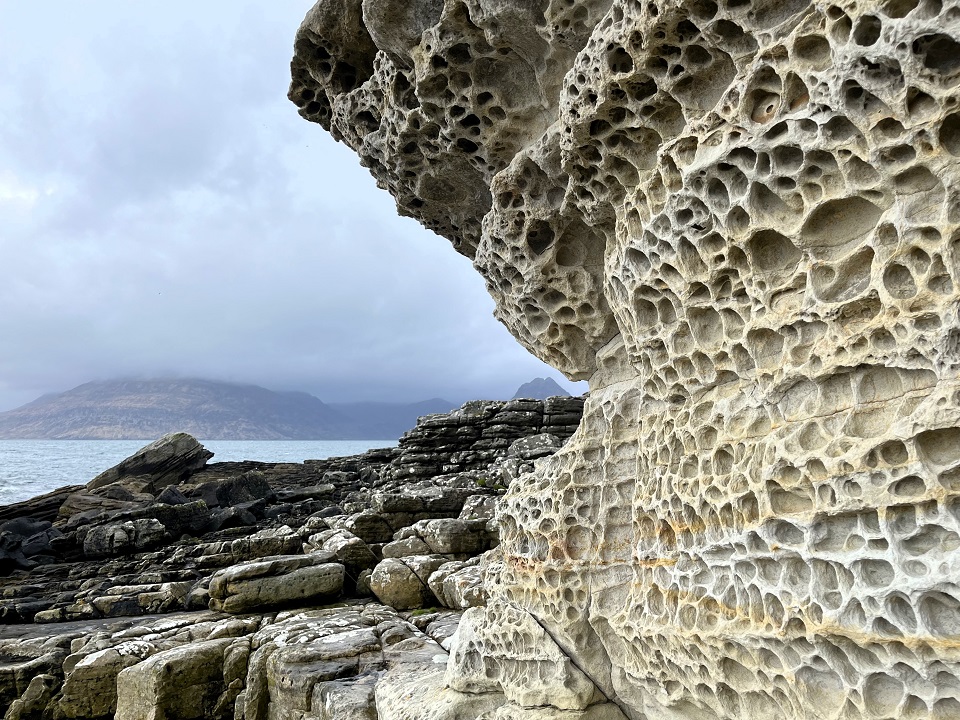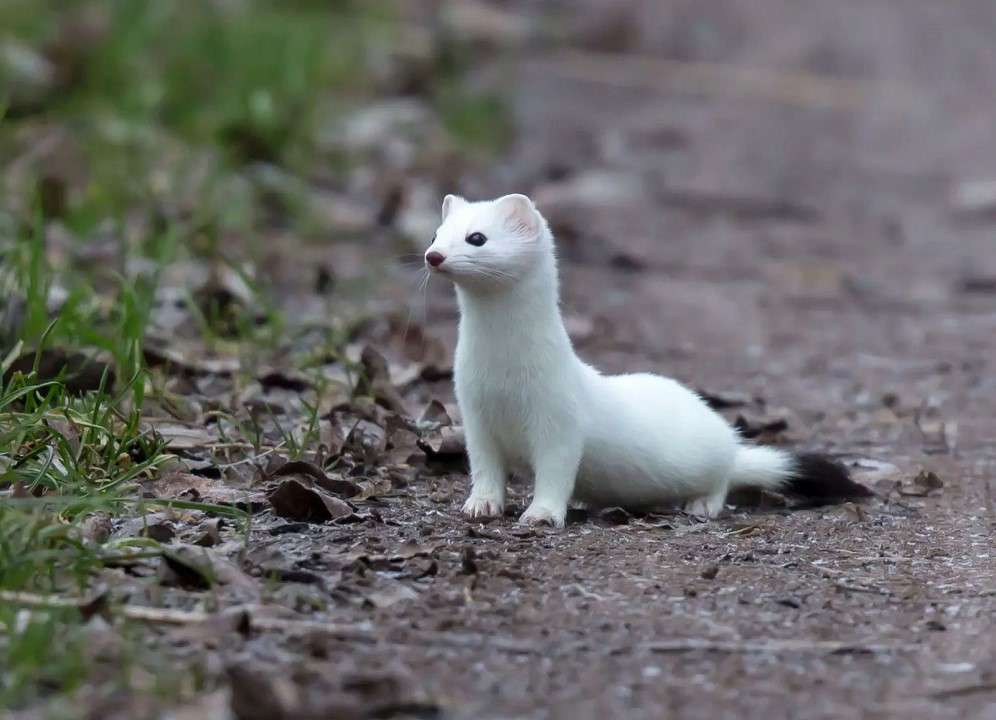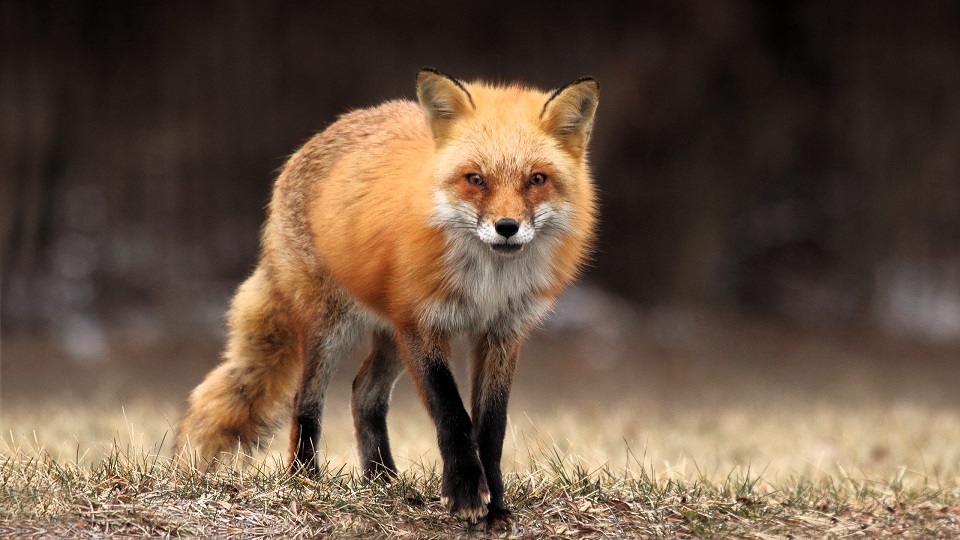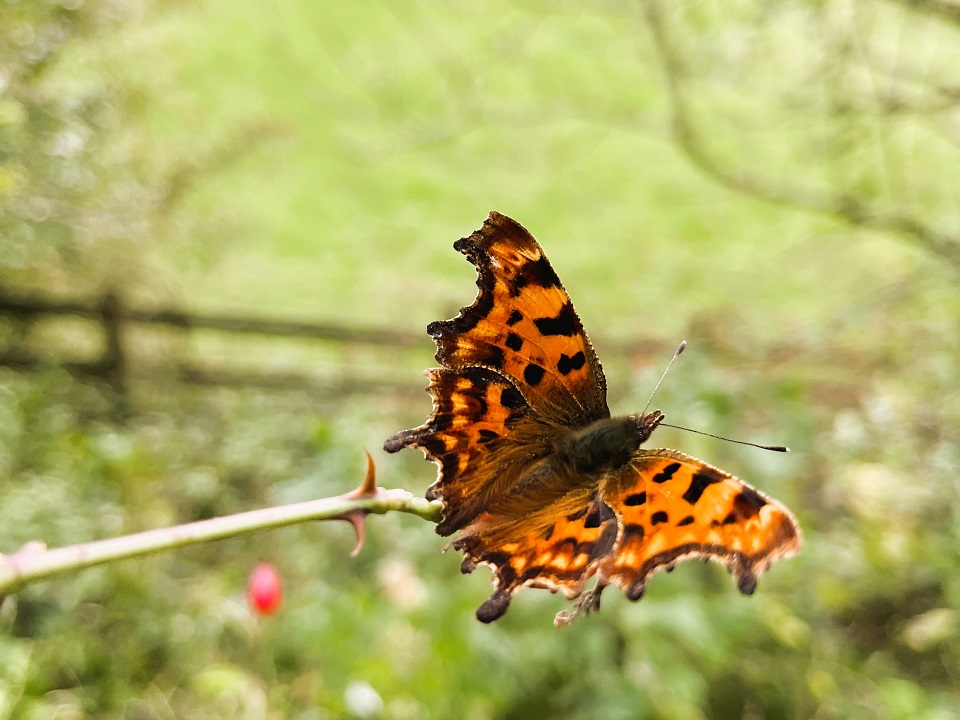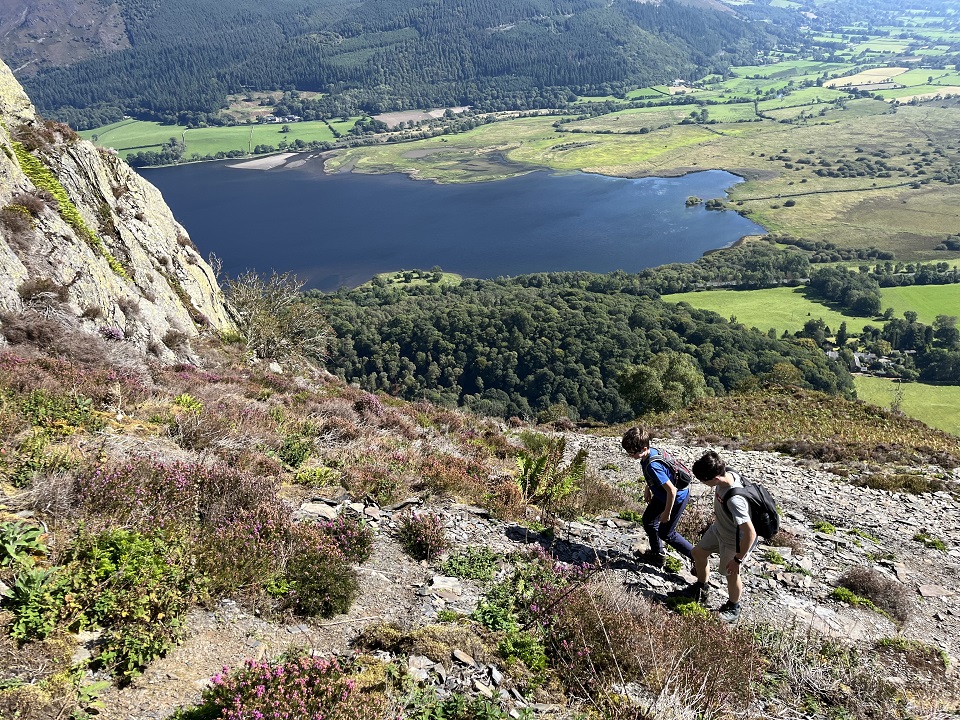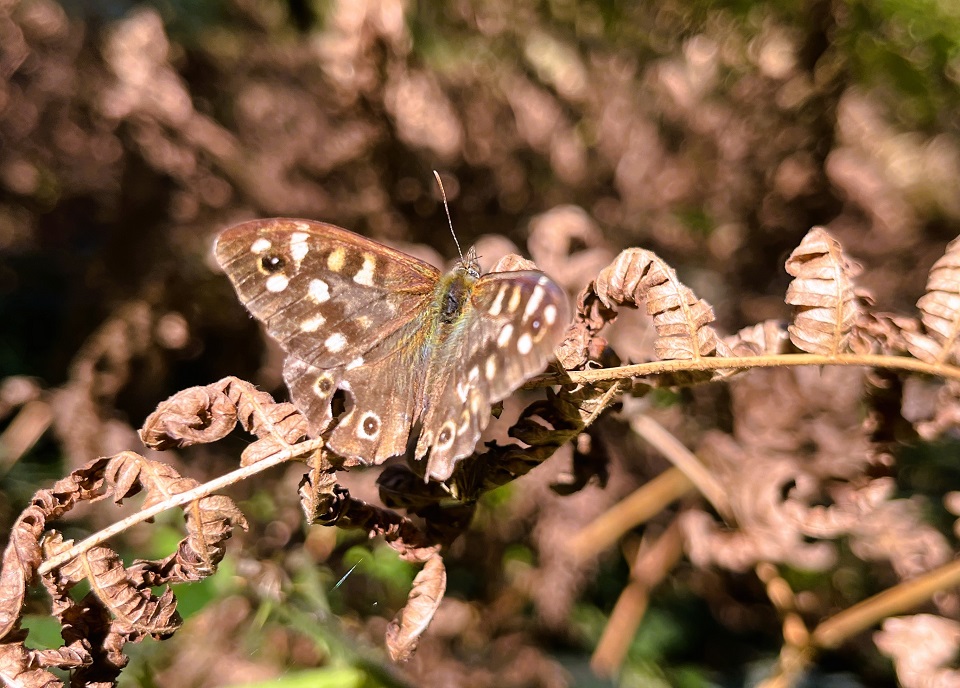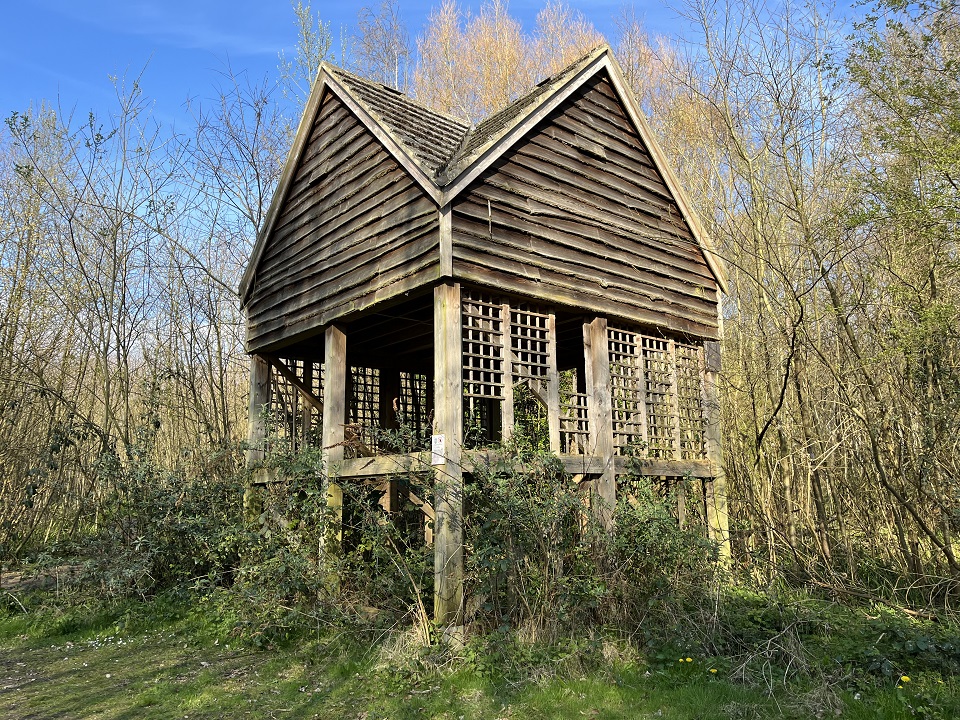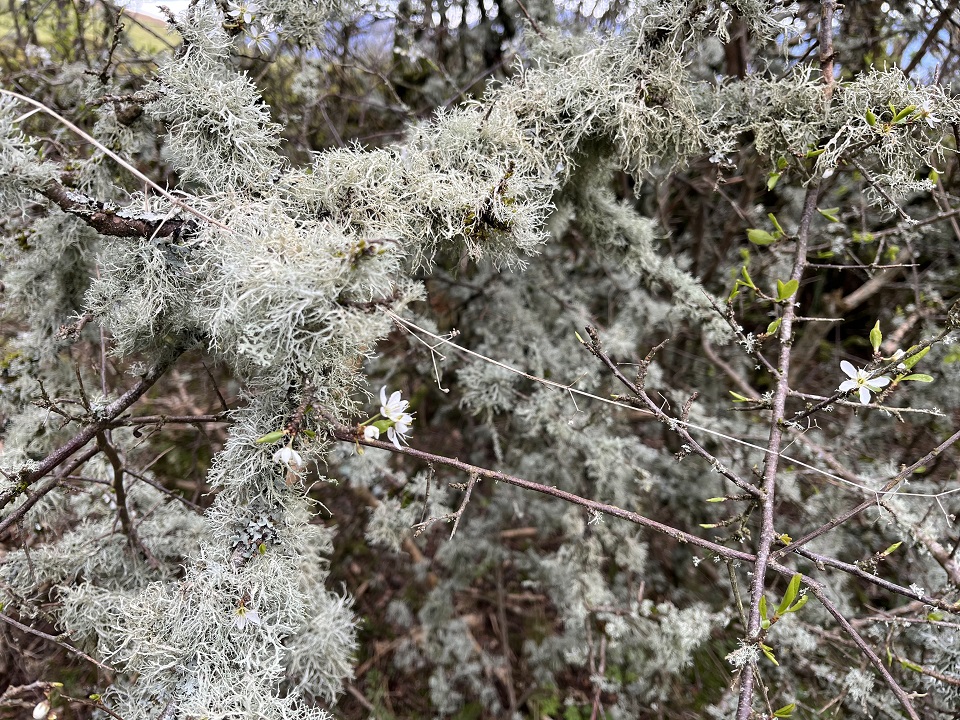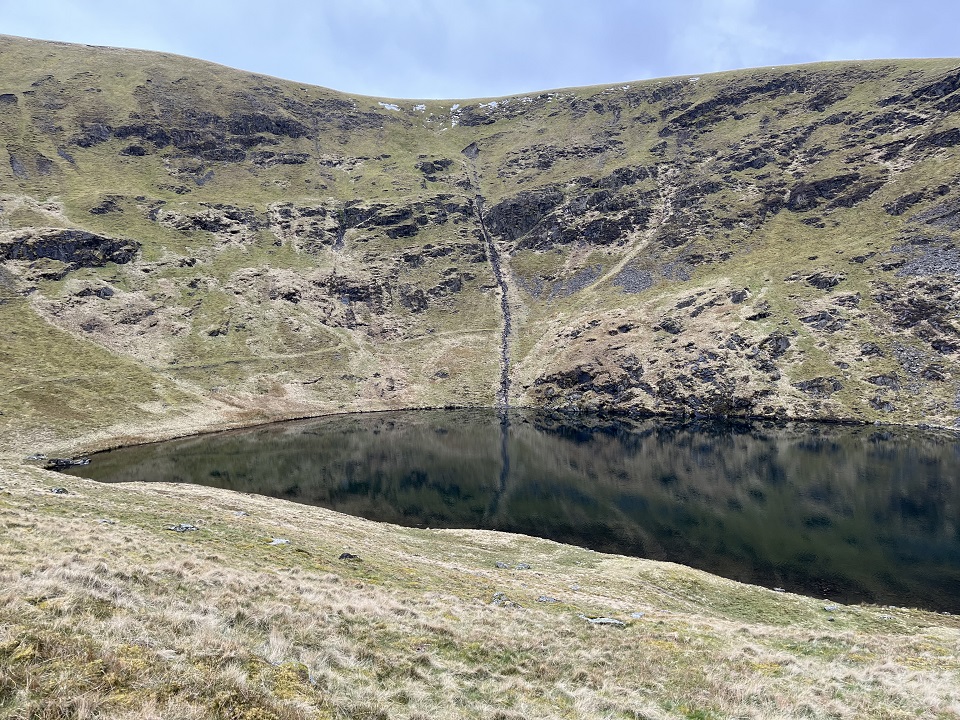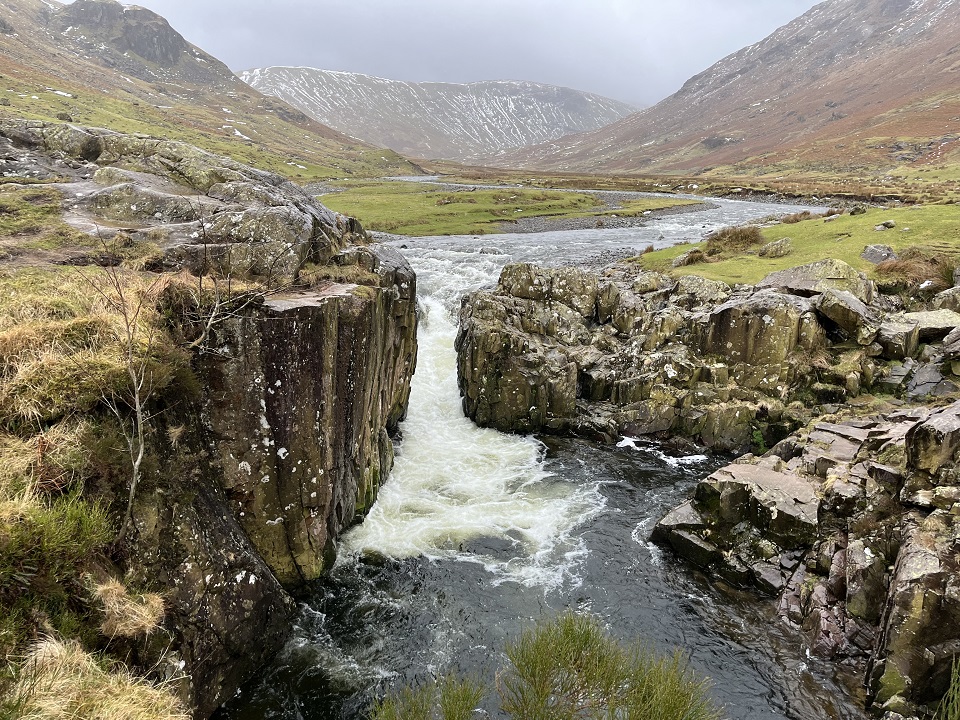Honeycomb Rock
On a recent visit to Skye we examined these amazing honeycomb rock formations at Elgol. Geologists are not absolutely certain as to the process which creates this effect, though the most common explanation is salt weathering (haloclasty): In coastal environments, salt water penetrates any cracks or fissures in the rock surface and then dries and expands in any warm weather. Salts may expand by up to three times as they dry and crystallise and may crack and fracture the rock as they repeatedly do so. This is similar to freeze thaw effects but in this case may lead to this pitting and honeycombing of the rock. It usually occurs in sandstone formations as is the case in Elgol. Interestingly, it is an effect sometimes seen in sea walls, which rather demonstrates how quickly it can occur.
If you are interested in learning more about the environment around you, Steve will be happy to help. He runs natural history and environmental outings to suit your needs and interests. Get in touch at steve@stevebanksoutdoors.co.uk and on 07796 213817
